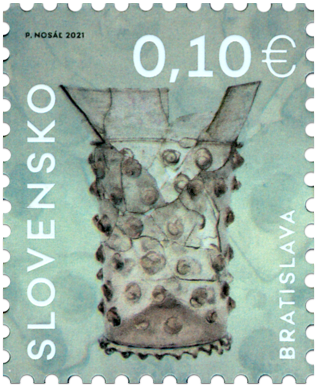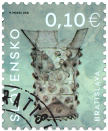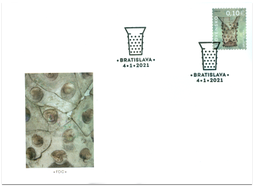731 Date of issue
04.01.2021 Face value
0.10 € Sell price
0.10 €
As early as prehistoric times, there was a marketplace on the crossroads of a trade route coming from the north towards a ford and a road running east to west alongside the River Danube. It was protected by a fortified encampment on the hill where, in the future, Bratislava Castle would be built. The marketplace was later enclosed by the lower town buildings. It stood on the southern, slightly extended area of today’s Ventúrska Street. In the 13th century, the marketplace gradually moved to, what is today, the Main Square. However, the richest townspeople still lived in the houses near the old marketplace. In the 1960s, thorough archaeological research was conducted in the area of the houses on Ventúrska Street, which was believed to be the area where the Universitas Istropolitana had been based. The University, founded by Matthias Corvinus in 1465, had supposedly used these houses from 1467. The complex is made up of several medieval town houses surrounding a shared courtyard. It was established as far back as the 10th century. Research has discovered a number of findings that date back to the period before the establishment of the University. Prior to that, the area was home to the families of the important townsmen, such as the Ventura financiers, whose name is still celebrated today in the name of the street, or the family of the mayor, Štefan Gmaitl, who died without any male successors. The households of townsmen, in the first half of the 15th century, used luxurious objects that would even be used at royal feasts. These included very expensive imported glass goblets, fragments of which were discovered during the archaeological dig. The surface of these thin-walled goblets was decorated with rows of glass drops reminiscent of raspberries. These glass drops were not mere decoration; they prevented these precious goblets from slipping out of the drinkers’ hands.
Štefan Holčík
Show less
© 2025 POFIS - Postal philatelic service. All rights reserved








